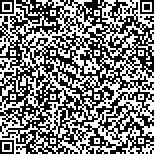下载中心
优秀审稿专家
优秀论文
相关链接
摘要

利用大气红外辐射传输模式,结合FY-2E静止卫星红外窗区光谱响应函数,模拟计算了标准大气环境下0-5 km各高度层气溶胶消光系数增量为50%和30%两种情况下对FY-2E红外1通道亮温增量的贡献。定量分析了春季气溶胶消光系数对亮温增量的影响以及主要影响高度。结合FY-2E红外1通道灵敏度,提出了可用于红外通道晴空沙尘气溶胶微弱示踪信号移动追踪的"时间差分法"。理论模拟计算和实例分析表明,在一定条件下,"时间差分法"追踪红外通道晴空沙尘气溶胶微弱示踪信号的移动,可以获得传统云导风所无法得到的干旱半干旱沙尘爆发区的风场信息,且反演得到的风场与美国国家环境预报中心NCEP再分析资料850 hPa风场有着很好的一致性。
We compute the total increase of the brightness temperature (T) from each of the five layers in an FY-2E IR1 window imagery which corresponds to 50% and 30% increments in the aerosol extinction coefficient within a half hour period. We used the MODTRAN radiative transfer model under the U.S. standard atmosphere, and analyzed the contributions to the total increment in aerosol extinction coefficient in spring, and the level at which the layered increment in T caused by an increment in the aerosol extinction coefficient is absolutely maximal compared with the T values of other levels. We describe a time difference technique based on atmospheric radiative transfer theory, aim to extract the weak aerosol tracer from the FY-2E infrared (IR) window channel with a sensitivity of 0.2 K for clear sky conditions. Both the simulation and case studies results show that we can obtain atmospheric motion vectors (AMVs) in the arid and semi-arid dust outbreak region by tracking the movement of a weak aerosol tracer in the FY-2E infrared (IR) window channel using the time difference technique when traditional cloud tracking does not work due to the lack of clouds. The results are in good agreement with the 850 hPa wind field acquired in National Centers for Environmental Prediction (NCEP) reanalysis data.

